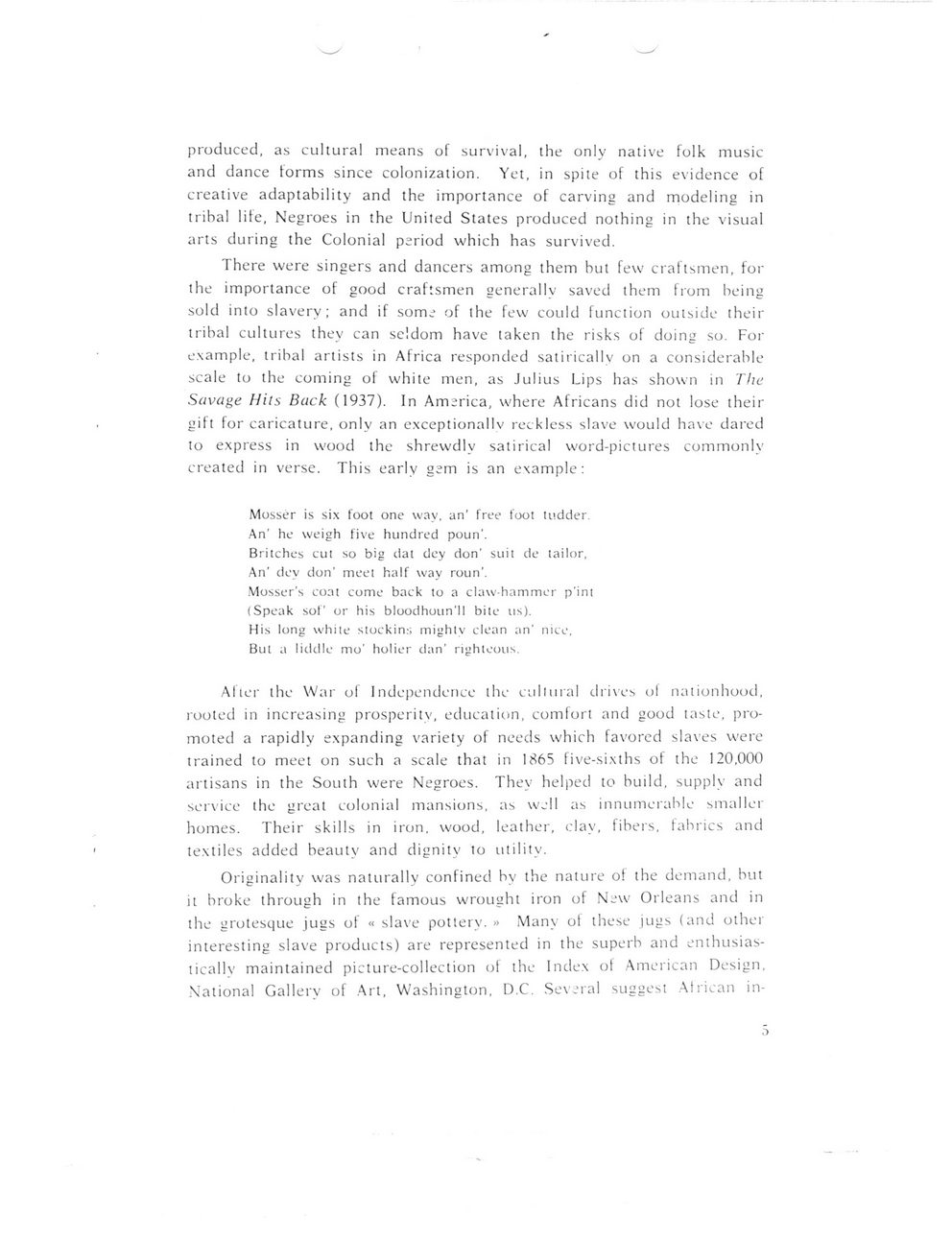This text was obtained via automated optical character recognition.
It has not been edited and may therefore contain several errors.
produced, as cultural means of survival, the only native folk music and dance forms since colonization. Yet, in spite of this evidence of creative adaptability and the importance of carving and modeling in tribal life, Negroes in the United States produced nothing in the visual arts during the Colonial period which has survived. There were singers and dancers among them but few craftsmen, for the importance of good craftsmen generally saved them from being sold into slavery; and if some of the few could function outside their tribal cultures they can seldom have taken the risks of doing so. For example, tribal artists in Africa responded satirically on a considerable scale to the coming of white men, as Julius Lips has shown in The Savage Hits Back (1937). In America, where Africans did not lose their gift for caricature, only an exceptionally reckless slave would have dared to express in wood the shrewdly satirical word-pictures commonly created in verse. This early gem is an example: Mosser is six foot one way, an' free foot tudder An1 he weigh five hundred poun?. Britches cut so big dat dey don1 suit de tailor, An? dev don' meet half way roun'. Mosser's coat come back to a claw-hammer p'int (Speak sof' or his bloodhoun'll bite us). His long white stockins mighty clean an' nice. But a liddle mo' holier dan' righteous. After the War of Independence the cultural drives ol nationhood, rooted in increasing prosperity, education, comfort and good taste, promoted a rapidly expanding variety of needs which favored slaves were trained to meet on such a scale that in 1865 five-sixths of the 120,000 artisans in the South were Negroes. They helped to build, supply and service the great colonial mansions, as well as innumerable smaller homes. Their skills in iron, wood, leather, clay, fibers, fabrics and textiles added beauty and dignity to utility. Originality was naturally confined by the nature o! the demand, but it broke through in the famous wrought iron of New Orleans and in the grotesque jugs of ? slave pottery. ? Many of these jugs (and other interesting slave products) are represented in the superb and enthusiastically maintained picture-collection ol the Index of American Design, National Gallery of Art, Washington, D.C. Several suggest African in-

Barthe, Richmond American-Negro-Art-04